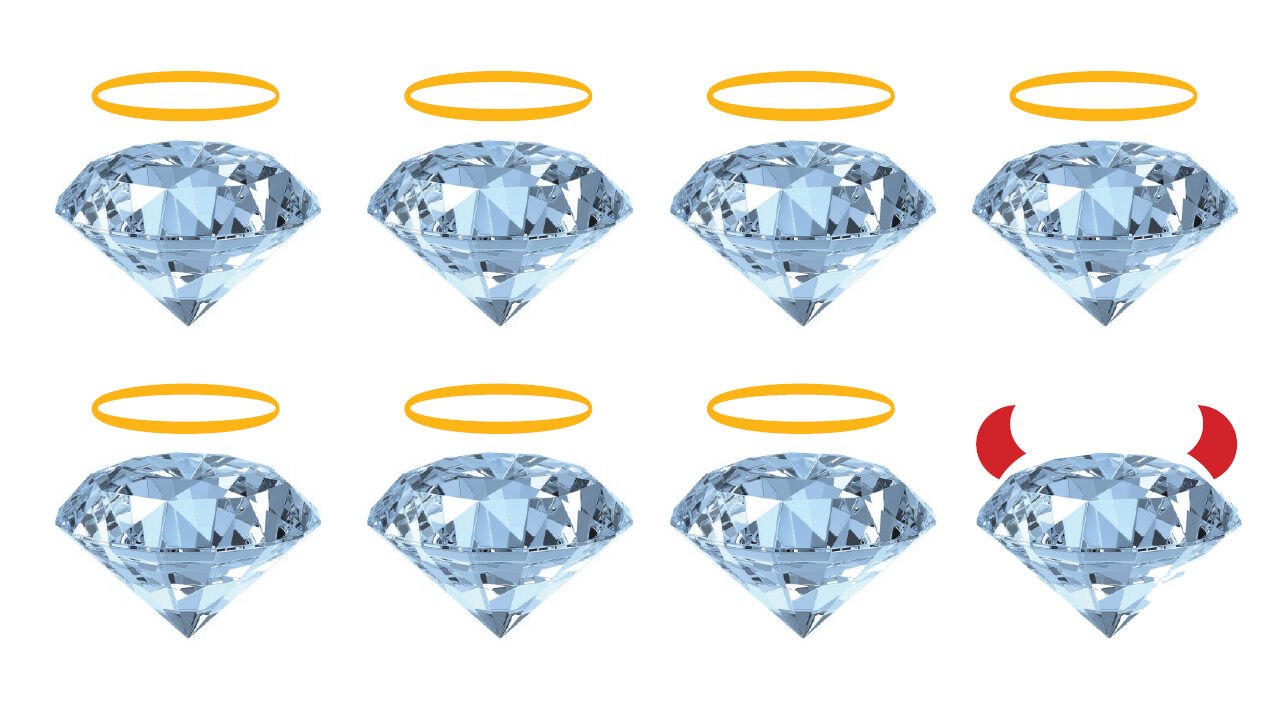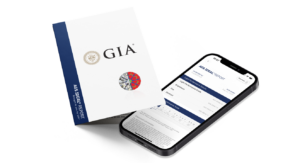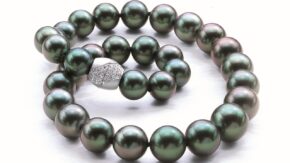Debate rages on over the role of lab-grown diamonds. What will the rising demand for synthetics mean for the diamond sector, and how is the industry preparing?
When the term “synthetic diamonds” was mentioned by a reporter on the floor of the London Diamond Bourse (LDB) recently, the mood quickly turned sour.
Dealers in natural diamonds have privately expressed a strong disdain for so-called synthetic, or lab-grown, diamonds. Many in the lab-grown sector refuse to use the word “synthetic,” saying that their product is, in chemical terms, as natural as a mined diamond that has been in the earth’s crust for hundreds of millions of years.
But for those who trade in natural diamonds, the chemical composition is beside the point. The real concern for them is that lab-created stones may become mixed up in parcels of natural melee without being disclosed as such.
The reality is that cost price and profit will come down.
Harry Levy, former president of the London Diamond Bourse
“It can happen anywhere cutters, manufacturers and dealers are most likely to mix,” says Harry Levy, a former longtime president of the LDB, and currently an adviser to the World Federation of Diamond Bourses (WFDB.)
Criminal non-disclosure risks diluting the market for melee, according to Levy, and is already reflected in the low value of small stones in the secondhand jewelry market.
“The reality is that cost price and profit will come down,” he says. Natural diamond traders say they are not opposed to what they call synthetics, but they do demand full disclosure of lab-grown product, as well as effective segmentation of the two businesses.
“I have nothing against synthetic diamonds as long as they are declared openly,” LDB President Menachem Prager told Rapaport during an Open Day in January.
With the increasing availability of highly proficient detection machines, it is impossible to know the full extent of fraudulent non-disclosure, which is subject to severe penalties – including ejection from the bourses.
“At a certain stage, the incidence of such practices becomes irrelevant,” says Gaetano Cavalieri, president of the UN-backed World Jewellery Confederation (CIBJO).
“If the consumer loses confidence in what he or she is buying, then the damage has been done already, whether the percentage of synthetic goods being sold undisclosed is small or large,” he asserts.
Stephen Morisseau, GIA’s director of corporate communications, says it is “up to the preference of the consumer whether they purchase a natural or synthetic diamond. However, proper disclosure about the nature of their stone is paramount.”
In the real world, diamond trade sources say, detection machines are not always used, even though they are now widely available via the bourses affiliated with the WFDB.
While Morisseau acknowledges concerns about inefficient detection mechanisms, he maintains that the latest technology from his institute is up to the task of detecting undisclosed synthetics.
“The rapid development of synthetic diamond growth technology – especially in melee sizes – and the lack of efficient, affordable means to detect them, have resulted in industry concern that synthetics and treated diamonds could be mixed in parcels with natural melee-sized stones,” he says.
Arguments for and Against Synthetics
PROPONENTS :
1. Lab-grown diamonds can fill shortages in supply where natural, mined diamonds cannot always deliver.
2. Synthetic diamonds offer better profit margins for retailers.
3. The scale of the synthetic market is currently small and doesn’t have the negative impact on natural diamonds that opponents claim.
OPPONENTS:
1. Lab-created diamonds have the potential for unlimited supply, which undermines the value of the product.
2. It’s difficult to determine how many have been produced, due to the unstructured nature of the industry and the low bar for entering it.
3. Even if lab-grown diamonds were inscribed and disclosed, dishonest players could easily polish off the inscriptions and pass these stones off as natural.
However, he continues, “GIA has developed a fully automated instrument for round D-to-Z melee size stones [under a quarter-carat]. The new GIA Melee Analysis service gives the industry – as well as the consumer – confidence in knowing what they are getting for the most prevalent stones in the market.”
WFDB President Ernie Blom says he does not see synthetics as an enemy of the trade, but like many other leaders in the natural diamond industry, he insists on proper disclosure and segmentation.
“They [lab growers] are not a foe, and I would like to engage with them,” he says, stressing that “the WFDB is not opposed to synthetic diamonds. We are opposed to undisclosed synthetics.
“We believe that every product will find its own market,” he adds. “If a buyer wants a synthetic stone that was made in a factory a couple of months ago rather than the romance of a real, natural, mined diamond that was made a billion years ago deep in the earth, then that is up to them.”
Meanwhile, the World Diamond Mark (WDM), now being rolled out to retailers internationally to promote sales of diamond jewelry, takes a tough line on synthetics: It says the mark will not be accredited to a retail space where lab-created diamonds are readily available.
In January, WDM head Alex Popov told a seminar at BrilliAnt, the eighth edition
of the Antwerp Diamond Trade Fair, that a piece of natural diamond jewelry represented extraordinary, emotionally charged luxury that could not be considered in the same light as a stone made in a laboratory.
Also speaking in Antwerp, Jean Marc Lieberherr – CEO of the Diamond Producers Association (DPA), which is driving forward the expanding, miner backed “Real is Rare” campaign – said a clear and sharp distinction must be drawn between natural and lab-grown diamonds to safeguard the long-term future of the market for natural stones.
…a crystallized piece of carbon, or a miracle of nature?
At another BrilliAnt seminar, Lieberherr urged wholesalers and dealers to press home to their clients that a diamond is a “miracle of nature” that can celebrate deep human emotions.
“Is a diamond a crystallized piece of carbon, or a miracle of nature?” he asked. “To me, the diamond is the second of the two.”
Several diamantaires in Antwerp said that unlike natural, mined diamonds, synthetic diamonds have almost no resale value.
DIAMOND GROWERS’ PERSPECTIVES
Manufacturers of lab-grown diamonds, meanwhile, believe that the increasing demand for their product, expected to amount to billions of dollars in global turnover in the coming years, will boost buying of all types of diamond.
One producer of lab-grown stones, asked if synthetic diamonds are friend or foe to the industry, replies, “I believe that as long as the sellers of all diamonds are transparent and honest, then the answer must be ‘friend.’
“Every industry needs to embrace new ideas and new technology,” adds the producer, who asks not to be identified. “There is no reason why the diamond industry should be an exception.”
However, Tom Chatham, the US-based CEO of Chatham Created Gems & Diamonds and a founder of the International Grown Diamond Association (IGDA), says he sees little prospect any time soon for collaboration between diamond-growers and the established natural diamond industry.
The only thing they want to ‘hammer’ is our potential success, a foolish and short-sighted position.
Tom Chatham, CEO of Chatham Created Gems & Diamonds
“Misinformation, fake news stories, unfounded estimates of production costs, and probability of falling prices all have contributed to an ‘us versus them’ attitude,” Chatham laments by email, adding, “The only thing they want to ‘hammer’ is our potential success, a foolish and short-sighted position.”
For his part, Blom says there are no plans at present to meet with the IGDA, “but it is imperative that I do.”
According to Chirag Soni, director of Solitaire Gemological Laboratories (SGL) – a gemstone laboratory company operating in India, Saudi Arabia and Britain – the natural diamond lobby has no hope of preventing the expansion of the lab-grown segment in any event.
“The prevalent sentiment on the part of many traders is that the so-called ‘synthetics’ must be blocked at all costs,” he says. “That ship, however, has sailed.”




